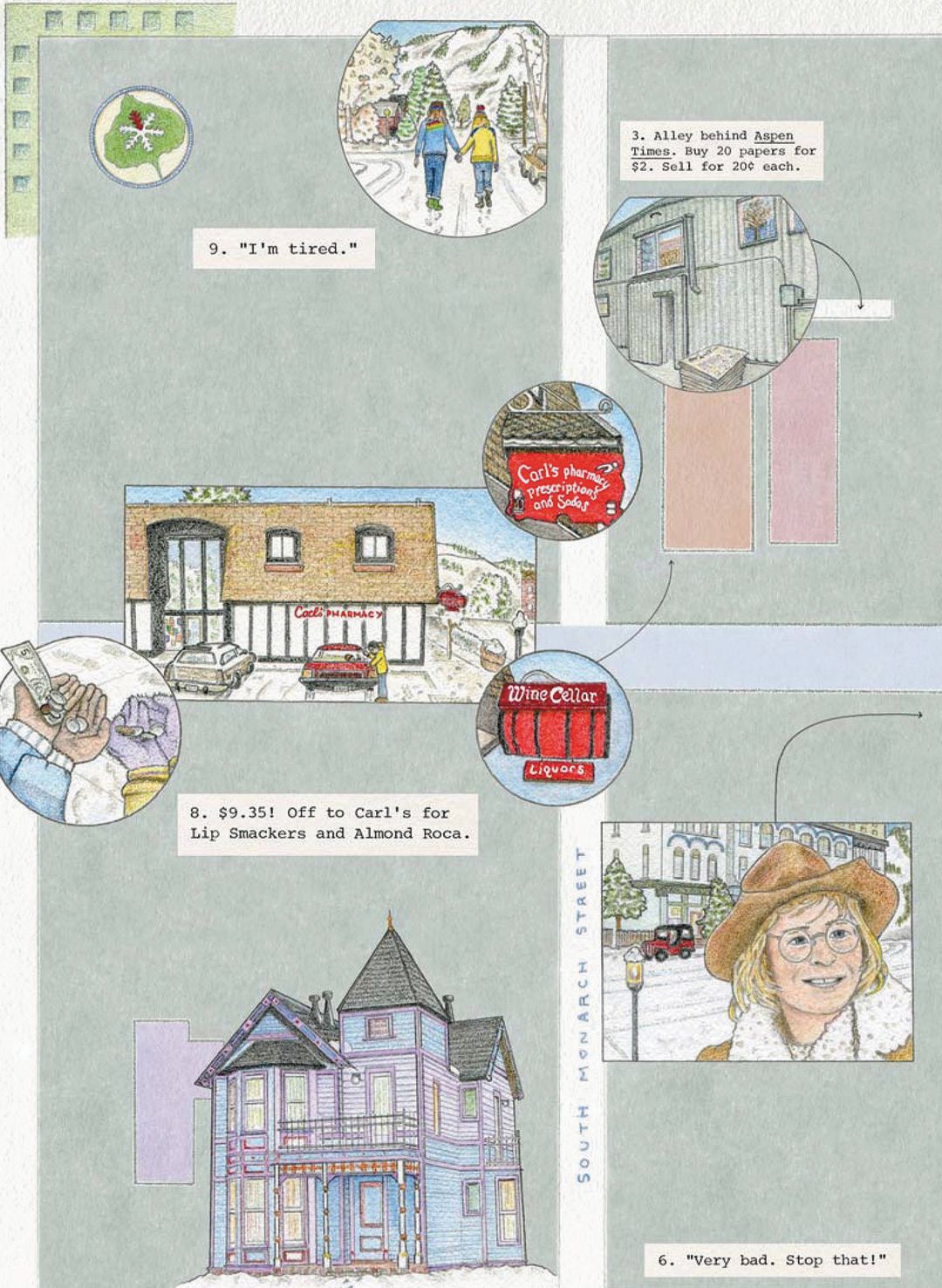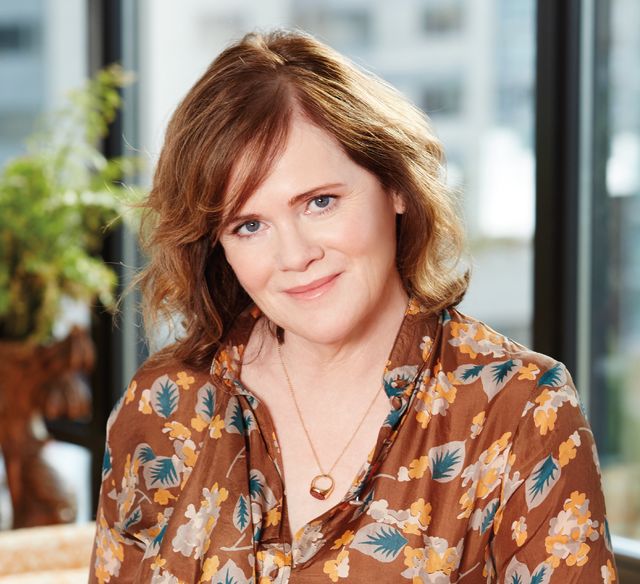Catching up With Aspen Native and Author Maria Semple

An illustrated excerpt from Today Will Be Different.
Image: Courtesy: Little Brown & Co.
Maria Semple, author of the gut-busting 2012 bestseller Where’d You Go, Bernadette, has followed up with a new novel, Today Will Be Different. The literary comedy follows former cartoon animator Eleanor Flood through a terrible, horrible, no good, very bad day as she whisks her precocious son around Seattle in search of her husband and reckons with her past.
Eleanor, like Semple, spent her adolescence in 1970s Aspen, a period the new book flashes back to in prose and in a gorgeous, 16-page illustrated graphic memoir in which Eleanor (actually artist Eric Chase Anderson) captures the period.
We caught up with Eleanor’s creator, who now calls Seattle home, to discuss the novel’s special relevance to a certain mountain town.
Updated (December 16, 2016):
Annapurna Pictures announced plans for a TV series starring Julia Roberts based on an adaptation of Today Will Be Different, for which Semple will also pen the script. After a former career as a writer Arrested Development,” “Mad About You,” and “Suddenly Susan.”, the project marks Semple’s official return to the small screen. And it’s not the first project between Semple and the Megan Ellison-fronted production company—she’s alsoo working on a film adaptation of her novel Where’d You Go, Bernadette? directed by Richard Linklater and starring Cate Blanchett.

Maria Semple now calls Seattle home.
Image: Elke Van de Velde
Aspen Sojourner: What was it about Eleanor or about this book that called you home?
Maria Semple: Aspen in the ’70s was a really strange place that people don’t understand. It was slightly off the radar. Summer was nothing. It was all an extension of the off-season, really. So there was something about it that felt like this special, strange thing to have been a part of and to have as part of my background. Of course, now you say you’re from Aspen, and people think Russian oligarchs and private jets and the drugs and the partying and the celebrities. That’s not at all what it was when we were growing up there.
AS: Are there pitfalls about writing about home, or about Aspen in particular, that kept you from fictionalizing it up until now?
MS: I knew I would have to spend a lot of time explaining that Aspen isn’t what you think it is, that we all lived in the West End before the houses were $6 million, that the postman lived on one side of us and the English teacher lived on the other side. It was a scrappy, cheap place to live. You would have to put so much oxygen into explaining that there actually is charm under this veneer of art galleries and time-share fronts and all this junk, fur coat shops and Prada and whatever the fuck is taking over everything—that it was this kick-around former mining town that no one really gave much thought to.
AS: Your dad [the late screenwriter Lorenzo Semple Jr.] has a cameo in the graphic memoir section. Are there other “Easter eggs” about Aspen in there that people who know you will recognize?
MS: People who grew up in the ’70s would know things like selling the Aspen Times. John Denver sightings were big then. Bill Stirling is in there, Jim Salter, the Hickory House, and obviously Carl’s [Pharmacy]. I tried to not go over the top with it and make it just about me and my memories but to put enough in that it felt credible and authentic. But I did get in snow baths at Aspen Country Day School. Also playing in Midnight Mine, which now sounds insane, but we used to do that as kids.
AS: How did you and Eric Chase Anderson work together on the graphic memoir section?
MS: I gave him captions and the years we were talking about. He started by going to the New York Public Library photo archive. He is so tweaky about period detail, in the best possible way. That made me rise up to another level. He really wanted the year and even the month to be accurate. And I gave him, like, 30 of my childhood photographs. Once we had the captions and this world, then we worked toward the images. We were totally in sync.













































